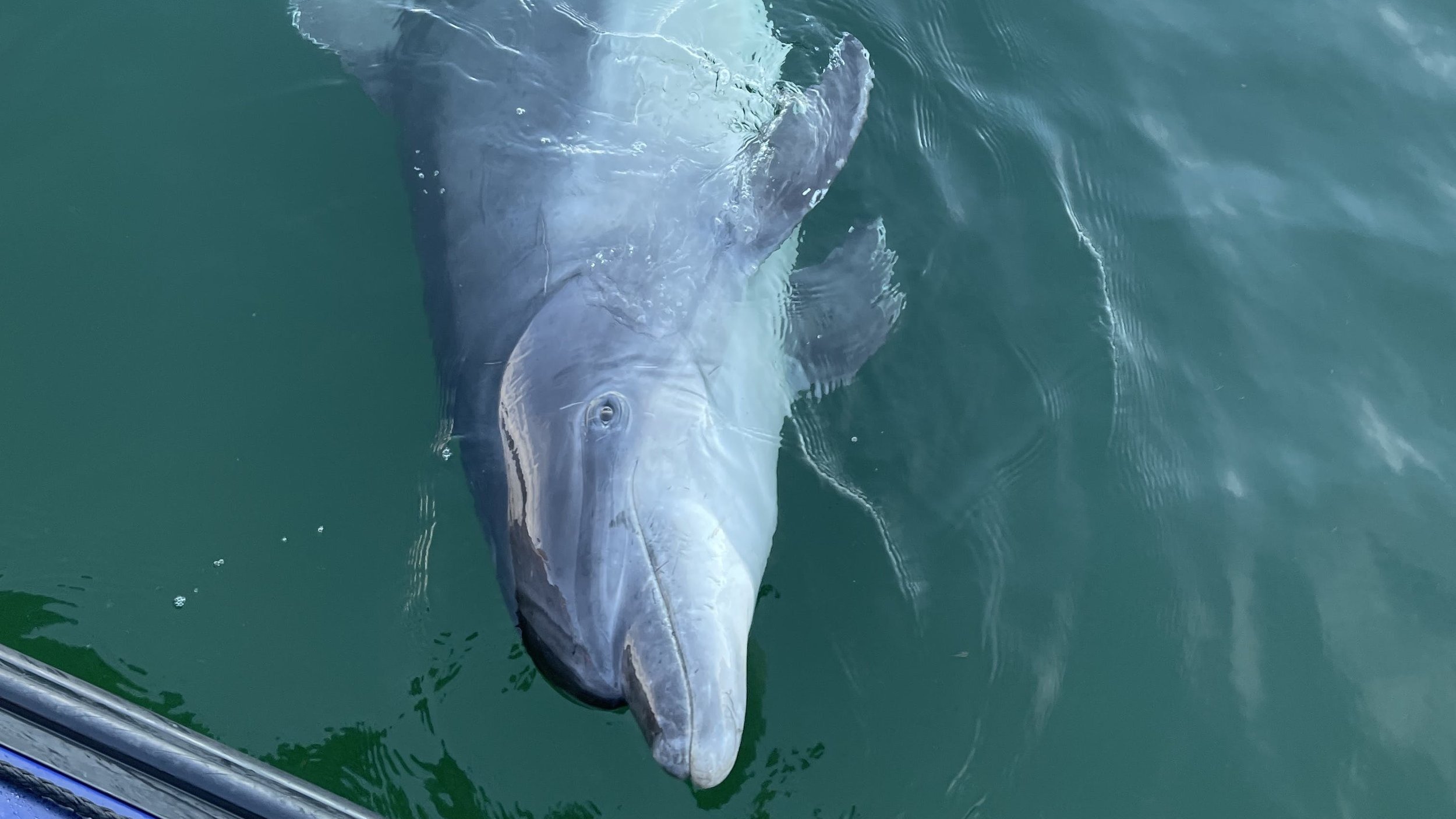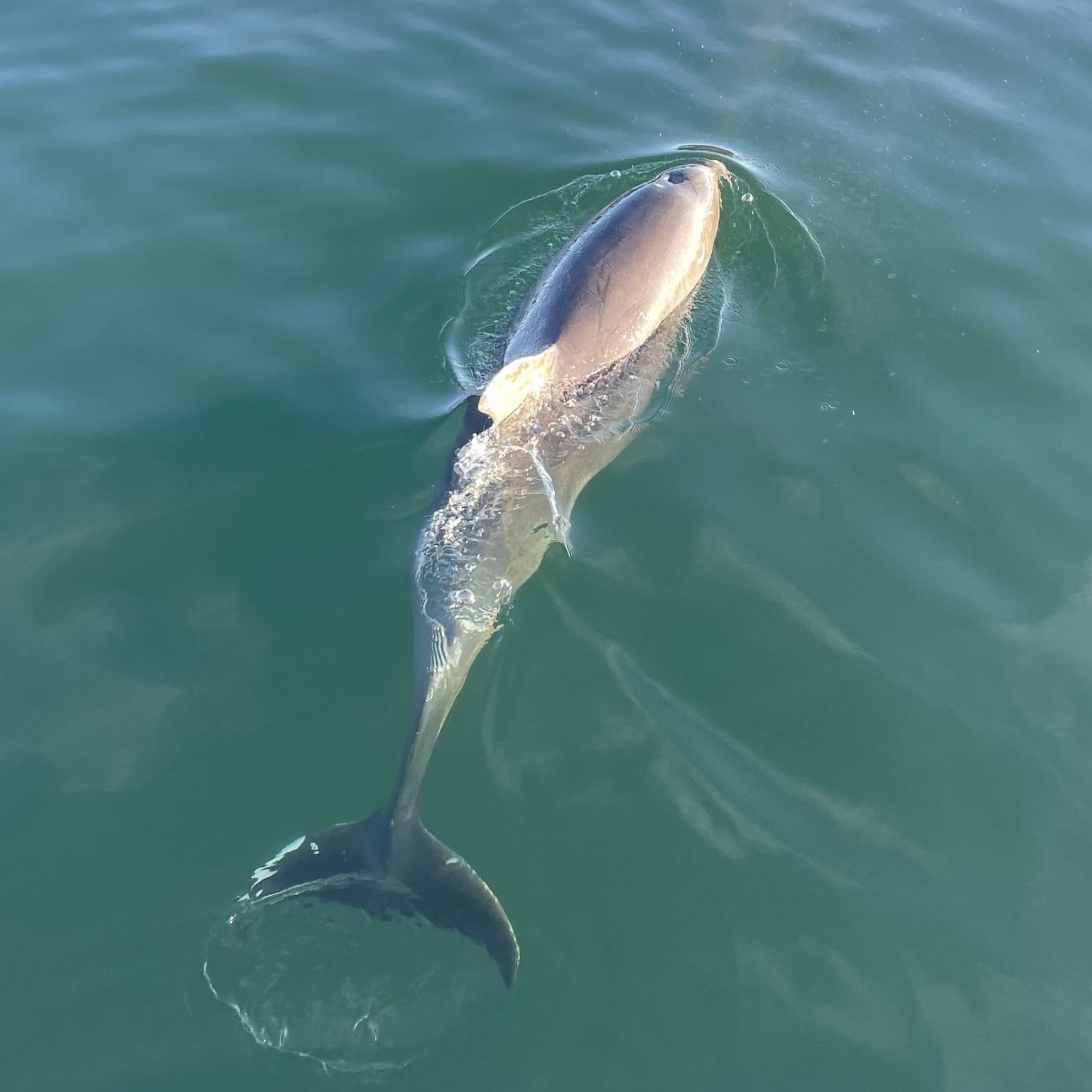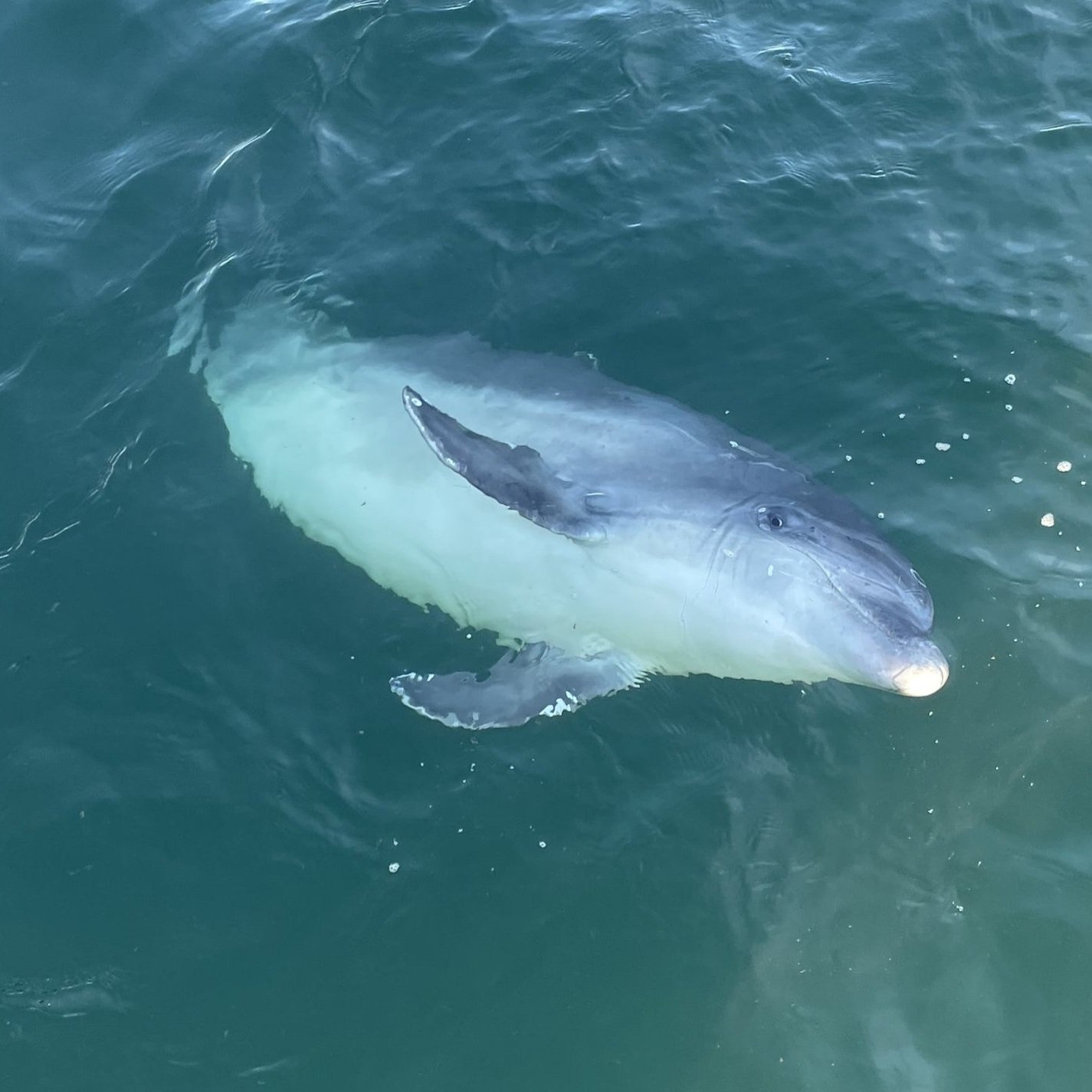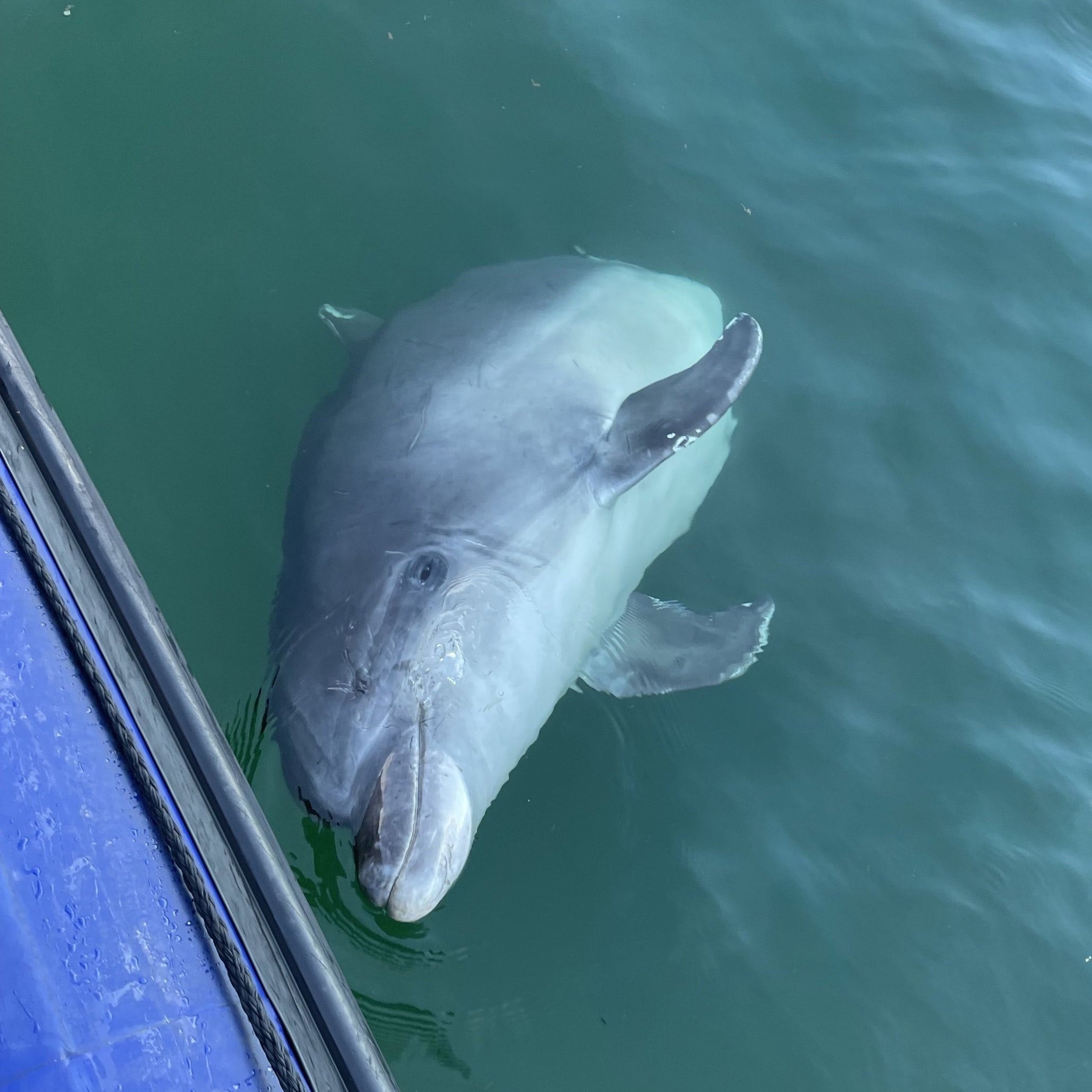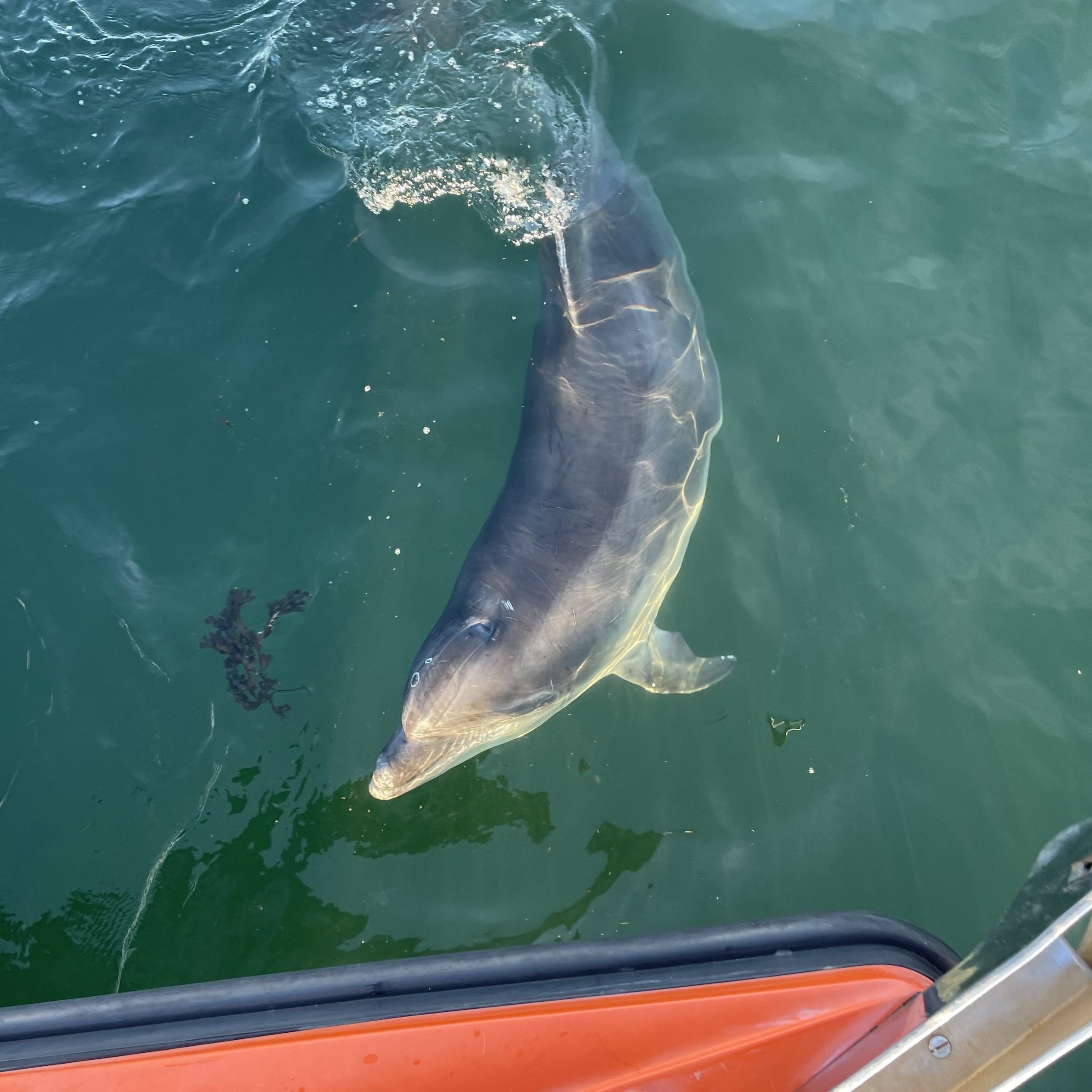Dolphin Detective Work Identifies Individual
A lone bottlenose dolphin was reported off the coast of Appin, via Whale Track. It wasn’t an animal from the Inner Hebridean or Barra pod, sparking investigation into who the individual may be.
Thanks to the efforts of all involved, the dolphin was identified, deepening the understanding of this individual’s life story and shedding light on the movements of bottlenose dolphins around our coasts. Vari Edwards, of the Clyde Whale and Dolphin Watch, details below how working together we are able to better understand the species which inhabit our waters.
Clyde Whale and Dolphin Watch (CWDW) was first contacted at the end of January by Liz Sandeman, the Programmes Officer at Marine Connection, who was investigating the identity of the solitary bottlenose dolphin which had appeared off the coast of Appin. Our immediate action was to scour social media sites to find as many images of the dolphin as possible, to help with the identification process. We discovered pictures taken by Cameron Smith (of Coastal Connections), who was contacted to ask permission to share his photos with others. The images were then sent to a number of researchers who may have recognised the dolphin: Jennifer Coxon of Citizen Fins, Dr. Barbara Cheney, research fellow at the University of Aberdeen and Mags Daly, Shannon Dolphin Project Officer, Irish Whale and Dolphin Group.
In early February, Dr Barbara Cheney responded with a positive match from the East Coast Dolphin Catalogue. Using a technique known as Photo-Identification, Dr Cheney was able to identify the dolphin as #1215 Tyler, based on the unique markings prevalent on his dorsal fin.
What is Photo-Identification?
Photo-Identification is a technique used to study various species, including whales and dolphins. Unique markings are used to identify animals, which build catalogues of individuals which make up a population. Whale and dolphin dorsal fins are commonly used to ID animals. Identifying an individual can unlock a range of information: population size, range, social interactions and help age the animal.
Until early 2020, it’s believed Tyler was part of a pod of five dolphins that were resident on the east coast. The pod has subsequently migrated to the Clyde, which they have made their home for approximately two years, growing in size last summer with the arrival of a new calf, named Clyde! It appears that the pod may have spent a few months in Stranraer before heading to the Firth of Clyde. While the dolphin was in the Clyde, CWDW named him Squiggle, due to the squiggly marks on either side of his dorsal fin.
Whilst Tyler/Squiggle was a member of a pod, he also seems to enjoy venturing off on his own - he was identified through underwater imagery posted on social media as the solitary dolphin approaching paddleboarders off Largs in the Summer of 2022. CWDW were able to positively identify him once again in Fairlie, where there were encounters with swimmers and again in the same area bow riding the pressure waves created by boats. In each instance, the dolphin was confirmed to be alone and had the same distinguishing features which allow us to positively identify him as Tyler/Squiggle.
In December 2022 Tyler/Squiggle was once again back with his pod, spotted off Gourock/Greenock with the last confirmed sighting being on 24th December, 2022 (Thanks to Stuart Kelly for his image). No further sightings were recorded until the most recent sighting of the solitary dolphin who surfaced in Appin in January 2023.
The remainder of the pod in the Firth of Clyde have been spotted frequently during January and February, however, Tyler/Squiggle remains at large. We wait to see whether he will return to the Clyde and re-join his pod, make his way back to the east coast or continue life as a solitary dolphin.
The latter is a little concerning. He has shown on more than one occasion that he is an extremely friendly chap that enjoys bow riding and socialising with people on the water. While it may seem like a great experience, this type of behaviour could have a negative impact on his wellbeing and the safety of both the dolphin and those around him. We would encourage anyone that encounters a dolphin to remember that they are wild animals, to give them space and try to avoid any interaction.
To continually improve our ability to monitor and record information on the movements of dolphins in the Clyde, and in other marine regions, we are reliant on a close working relationship with likeminded organisations and individuals. We need members of the public to get involved in citizen science and record their sightings via HWDT’s Whale Track app, and to share their photos. One photo can provide much needed information, from the ID to the social structures and distribution of these animals. Sharing of data is essential for us to continuously learn about the habits of the marine mammals in our area and ultimately do all we can to protect the cetaceans in our waters.
Clyde Whale and Dolphin Watch (CWDW) is a citizen science project that was established in 2022 to monitor marine life in the Clyde and positively identify species in collaboration with numerous organizations, projects, and volunteers. For further information on how to get involved, please contact - info@clydewhaleanddolphinwatch.com or visit the Clyde Whale and Dolphin Watch website.
Special thanks to Dr Barbara Cheney from the University of Aberdeen for the positive ID of the Appin dolphin. This has been possible due to her long-term research and willingness to support.
Thanks also to Cameron Smith, of Coastal Connections, for reporting the Appin sighting through Whale Track and allowing us to use his images (all images in this blog were taken by Cameron).
Well done to everyone involved in making this match. These discoveries have a significant impact on our understanding of bottlenose dolphins in Scottish seas. Citizen science is key and anyone can get involved in helping to deepen the knowledge of these animals.

